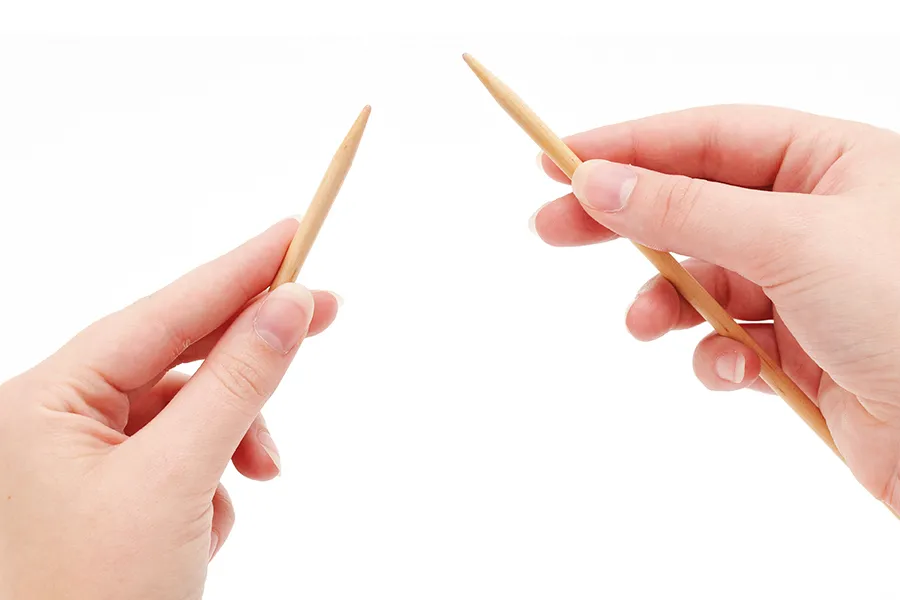Learn the lingo with our glossary of knitting terms
Between the abbreviations, in-jokes and technical jargon, learning a new craft can also involve learning a new language. So if you're looking for knitting terms explained in plain English, you've come to the right place!
We'll explain some of the knitting terms you'll commonly find in knitting patterns, as well as acronyms you'll hear used at knitting clubs and see on online forums.
- 132 knitting stitches for beginners and beyond
- How to read knitting patterns
- Knitting needle sizes and conversion chart
For other knitting terminology we also have an in-depth guide to knitting abbreviations, which includes all the common stitches you'll encounter in our knitting patterns.
Before you start knitting, get to grips with the fundamentals with our knitting basics series. We'll help you make your first stitches, and more! Check out our complete guide to knitting for beginners and learn how to read knitting patterns to start mastering the techniques today.
Knitting terms A-Z
Ball band
The wrapper around a ball, skein or hank of yarn that contains useful information such as fibre content, the recommended needle size and tension, and washing instructions.
Ball end of yarn
The end of the yarn that runs from the knitting on your needles back to the ball of yarn being used.
Ball winder
A device for winding hanks or skeins of yarn into balls so they can be knitted more easily. Often used with a swift. See our pick of the best yarn winders.
Blocking
Shaping a piece of knitting once it’s finished (or after it’s been washed) by pinning it out flat while it’s damp and letting it dry. Check out our guide on how to block knitting projects.
Bobbin
This knitting term refers to a small reel or other shape for holding different coloured yarns during intarsia work.
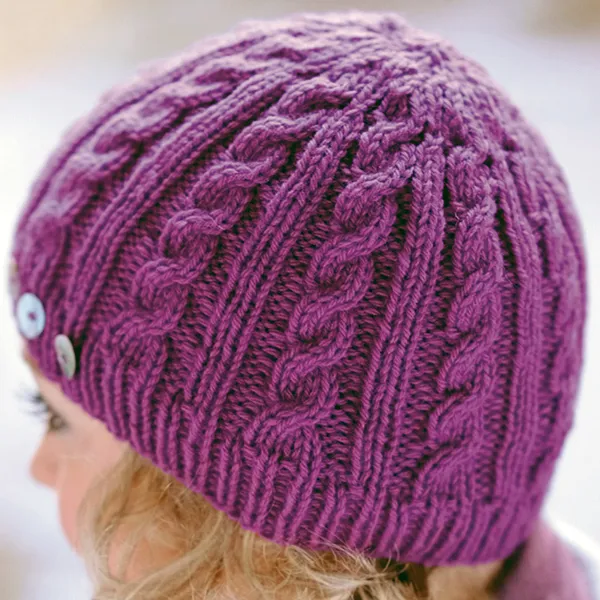
Cable
A motif created by crossing stitches over each other. Designs look like twisted ropes or cables, hence the name. Find out how to cable knit with our beginner's guide.
Cake
Not the edible variety: in knitting terminology, this refers to a skein or hank of yarn that has been wound into a round cake-like shape, and is ready to be knitted. Gradient yarns are often sold in cakes to show off their pretty colour changes. Yum!
Cast off (also: bind off)
To finish a piece of work by completing the loops of knitting so that they can’t unravel. There are various ways of doing this – see our guide on how to cast off knitting.
Cast on
To begin a piece of knitting by creating the first row of stitches. There are several sorts of cast-on, as explained in our how to cast on knitting guide, suitable for different sorts of garment or project.
Circular knitting (also: tubular knitting)
A method of knitting using double-pointed needles (DPNs) or a circular needle to produce a seamless garment. It's also called tubular knitting or knitting in the round.

Colourwork
A general knitting term to describe working with different coloured yarns within one project. This includes anything from basic stripes to intricate Fair Isle.
Continental method
The Continental method is a style of knitting where the yarn is wound through the left hand, with the left forefinger wrapping the yarn around the needles.
Decreases
Various techniques for reducing the number of stitches on a row, in order to shape your knitting or to create a decorative effect. Learn how to decrease in knitting.
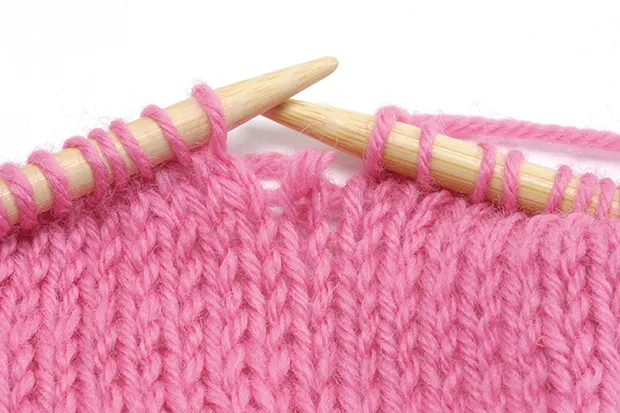
Destash
To give away, sell or swap unwanted yarn from your stash. Often followed by buying more yarn…
Dropped stitch
A stitch that has mistakenly slipped off the needles, creating an unwanted hole in an item (as opposed to a slipped stitch, which is created deliberately to either shape a garment or make a pattern). Follow our guide to find out how to pick up a dropped stitch.
English method
A style of knitting where the yarn is threaded around the right hand and the right forefinger is used to wrap the yarn around the needles.
Fair Isle
Traditional multicoloured designs from the Shetland Isle of Fair Isle. The Fair Isle knitting technique sees any coloured yarns not in use carried along the back of the pattern (unlike intarsia patterns where short lengths of different coloured yarns are woven into the knitting where needed).
Felting
The process of agitating the fibres of a knitted fabric (usually one made from wool or animal fibres), often by washing in hot water, to create felt. It can be done by accident, so always check the washing instructions on your ball band.
FO
Finished object. A completed knitting project.
Frogging
Undoing the stitches in a piece of knitting, either to correct a mistake or to use the yarn for another project. (So-called because you ‘rip it, rip it’!)
Front of work
The side of a piece of knitting that faces you while you work – this could be the ‘right’ or ‘wrong’ side [see right side and wrong side].
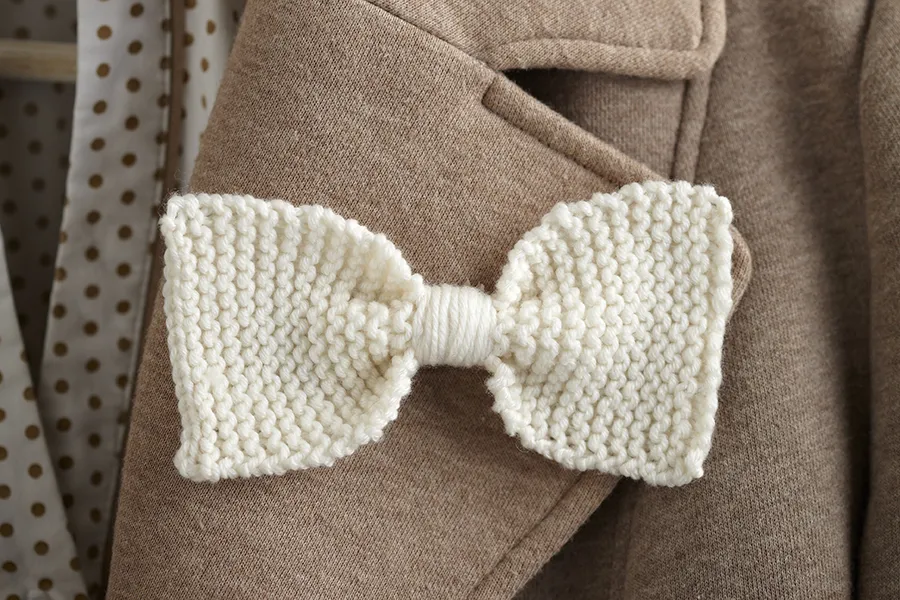
Garter stitch
Garter stitch is a pattern created by using the knit stitch for every row. (If you’re knitting in the round then you should knit one round and purl one round alternately to get the same effect.)
Halo
The fuzz and fluff of loose fibres around a strand of yarn is known as its halo. You'll notice a halo on yarns made from mohair and similar fibres. Yarns with a halo can be harder to work with as it's more difficult to see your stitches.
Hank
A coil of yarn that needs to be wound into a ball before it can be knitted. Also called a skein.
i-cord
A thin tube of knitting that can be used as an edging, strap or fastening. You can knit them on DPNs or achieve a similar result on a knitting dolly (also known as a French knitting doll).
Increases
Various techniques for adding length to a row of knitting by creating stitches in order to shape a garment, or to form a range of stitch patterns. Learn how to increase a stitch in knitting.
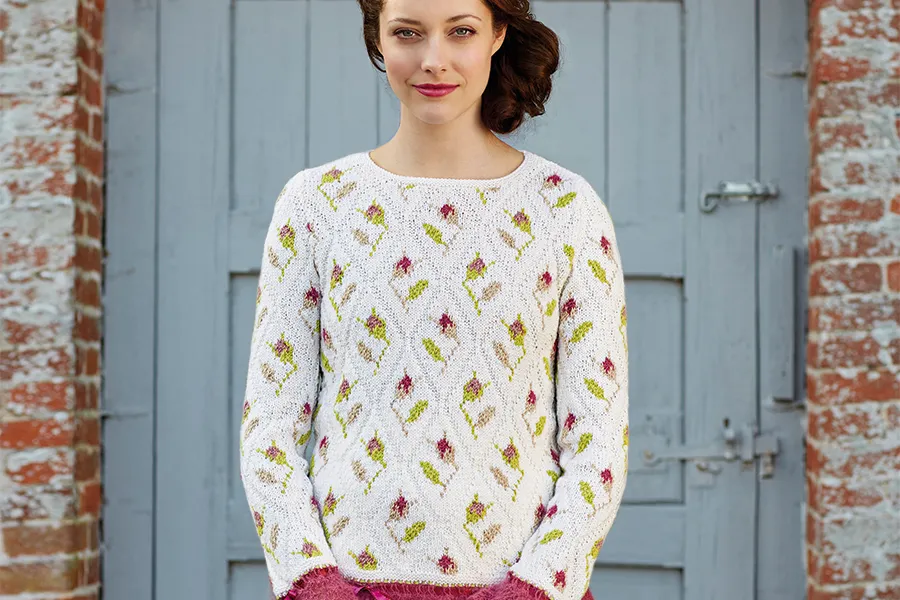
Intarsia
What is intarsia knitting? It's a technique for creating colourful motifs within a pattern. Separate lengths of yarn are used for each section of colour, unlike in Fair Isle knitting, where the different coloured yarns run along the back of the design until they’re needed again.
KAL
Short for knit-along. Used to describe a group of knitters starting the same project at the same time and sharing their progress.
Knit
One of the two fundamental knitting stitches (the other is ‘purl’). Made by inserting the right needle into a stitch, so it crosses behind the left needle. See our guide to find out how to do a knit stitch.
Knitwise
Put the needle into the next stitch as if you’re going to knit it.
Lanolin
The oily substance found in sheep’s wool that gives it its natural weather resistance.
Long-tail cast-on
A method of casting on that creates a stretchy edge on a piece of knitting.
Loop cast-on (also: single cast-on or thumb cast on)
One of the easiest cast-ons to learn, which creates a loose edge on a piece of knitting. Read our how to cast on guide for step-by-step instructions.
LYS
Local yarn shop – the place on the high street where you buy your yarn. We have a guide to the best UK yarn shops for you to visit.
Making up (also: joining, seaming)
Sewing together the different parts of an item that have been knitted separately (such as the sleeves and body of a sweater). Learn how to finish knitting like a pro with our guide.
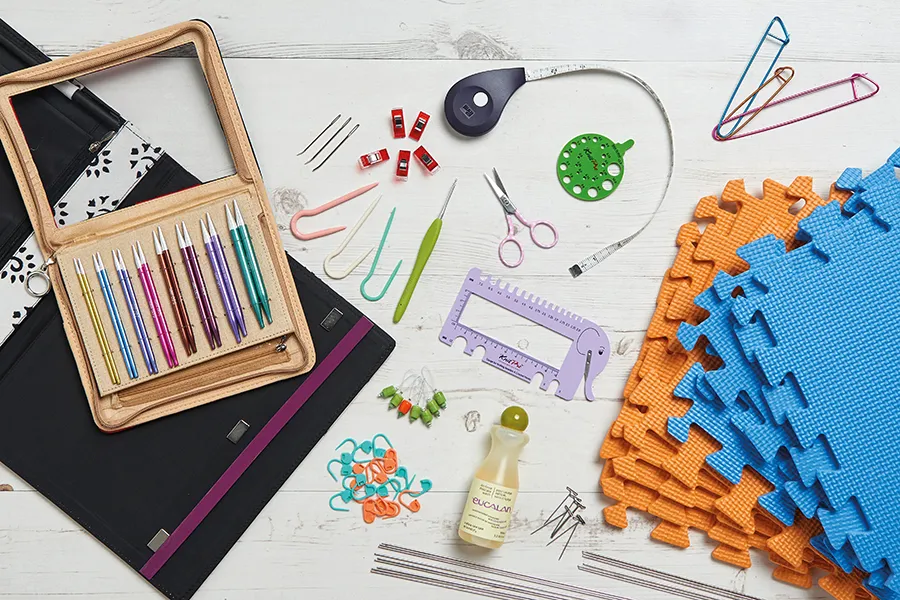
Notions
Accessories and equipment, ranging from the essential to the frivolous, including stitch markers, bag handles, buttons and wool-washing detergent.
Pick up stitches (also: pick up and knit)
A technique for adding a border, such as a heel or neckband. The border is attached by knitting it onto the main knitted piece, then just working on the border stitches.
Pilling
The ‘bobbly’ effect seen on knitted garments caused by everyday wear.
Ply
A strand of fibre that can be spun together with other plies to form a yarn (some 4ply yarn is made from four strands, for example).
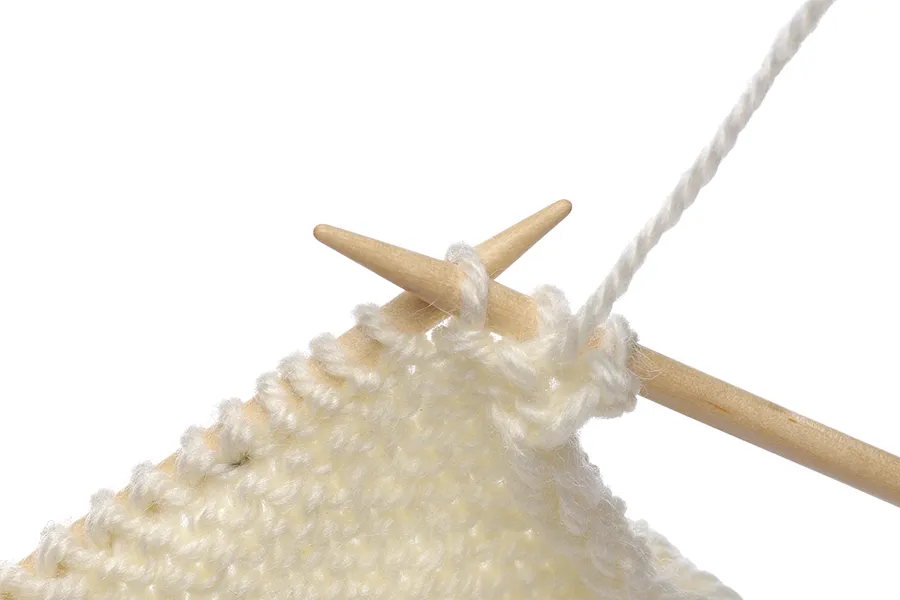
Purl
One of the two fundamental knitting stitches (the other is ‘knit’). A purl stitch is made by putting the needle through the front of the stitch from right to left.
Purlwise
Put the needle into the next stitch as if you’re going to purl it.
Reverse shaping
To work a pattern in the mirror image of any previous shaping – on the left and right front pieces of a cardigan, for instance. If the previous shaping instructions asked you to increase stitches at the end of a row, you’d need to increase at the beginning of a row to do reverse shaping.
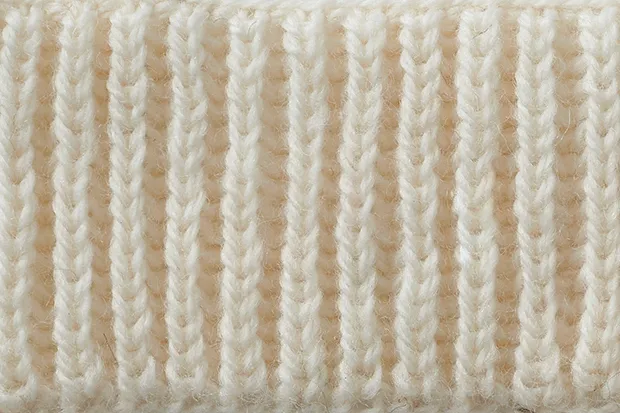
Rib
A pattern of alternating knit and purl stitches, resulting in a stretchy piece of knitted fabric. Rib stitch is often used for hems and cuffs.
Right side
The ‘public-facing’ side of an item, such as the outside of a sweater or of a hat.
Round
The name for a row of stitches when knitting in the round, either on circular needles or DPNs.
Row
A series of stitches that runs the width of a piece of knitting. Lengthening or shortening rows by increasing or decreasing the number of stitches will help to shape the item.
Sable
In knitting terminology this stands for ‘Stash Accumulation Beyond Life Expectancy’. When you've got more yarn than you could possibly knit in a lifetime, you've reached Sable.
Selvedge
The edge of a piece of knitting. The stitches here are the ones that are sewn together when you make up a garment from separate pieces. If it’s something like a scarf, the selvedge might be knitted in a more decorative way because it will be visible.
Short-row shaping
A technique for shaping a piece of knitting (commonly short row sock heels or bust darts) with a smooth edge. It involves knitting part-way through a row rather than all the way to the end, before ‘wrapping and turning’ and knitting back the other way.
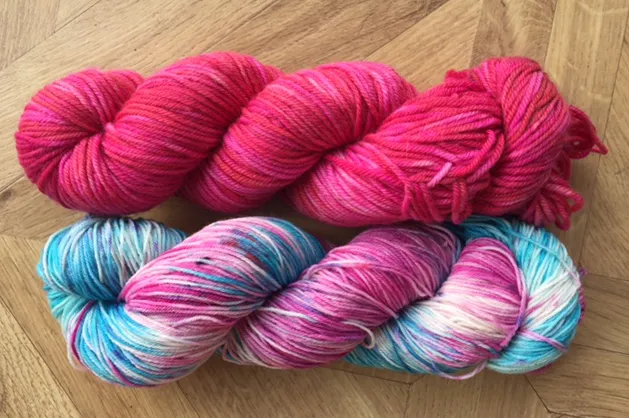
Skein
A loose twist of yarn that’s ready to knit (although most knitters wind it into a ball first). Also called a hank.
Slipknot
The most commonly used knot for making a secure loop of yarn when you cast on. Find out how to make a slipknot for knitting.
Slip stitch
To move a stitch from one needle to the other without wrapping the yarn around it. This can be done to create a decorative pattern in the knitting, or as part of a series of decreases. We show you how slip stitch knitting works in our guide.
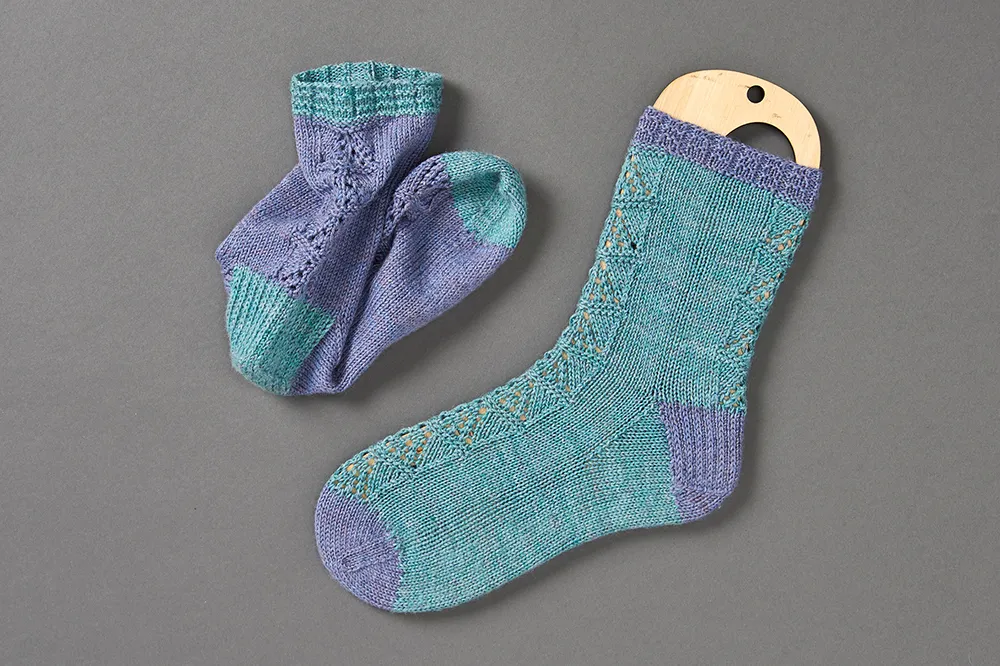
Sock blocker
A flat, foot-shaped mould inserted into socks so they can be shaped [see Blocking]. Choose a sock blocker with our buyer's guide.
Stash
A knitter’s collection of yarn, needles and notions.
Stashbusting
Using yarn from your stash (see above) for a project, rather than buying more. Often used to prevent Sable.
Stocking stitch (also: stockinette)
Stocking stitch is a pattern created by alternately knitting and purling rows. (If you’re knitting in the round then you’ll need to knit every row instead of every other, to create the same effect.)
Swift
A rotating device that holds a hank or skein of yarn while it’s made into a ball (this can either be by hand or by using a ball winder).
Swiss darning
Also known as duplicate stitch knitting, Swiss darning involves covering a stitch with an embroidery stitch the same shape as the stitch beneath it. Can be used to fix mistakes in colourwork, or create small colourwork motifs.
Tail end
The loose short end of the yarn being worked (as opposed to the ball end, which runs back to the ball of yarn you’re using).
WIP
Short for ‘work in progress’ – any project that you’ve started but not yet finished.
Work straight (also: work even)
An instruction to continue a series of rows in a pattern without increasing or decreasing.
Working yarn
The strand of yarn currently in use (most likely to be mentioned in Fair Isle or intarsia patterns where several colours are swapped in and out).
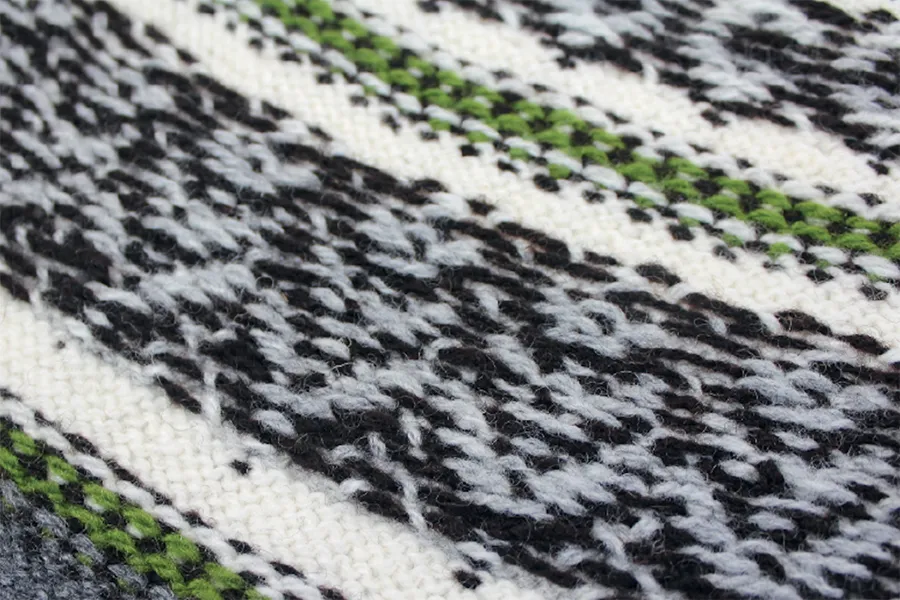
Wrong side
The side of your knitting that will be the back (or the inside) once it’s finished.
Yarn
Any fibre that’s been spun into a strand so it can be knitted. The word ‘yarn’ is used instead of ‘wool’ in order to distinguish from actual wool (ie yarn from a sheep)!
Yarn over (also: yarn forward)
To make a new stitch by wrapping the yarn over the right-hand needle. Find out how to do a yarn over.
Now you know your knitting terms!
Taking the time to learn the lingo will make your knitting journey much smoother. From basic abbreviations to quirky in-jokes, with our guide to knitting terms you'll soon be up to speed.
Take your next steps in knitting
Want to take it further? Find even more knitting knowledge in our complete guide to knitting for beginners.
